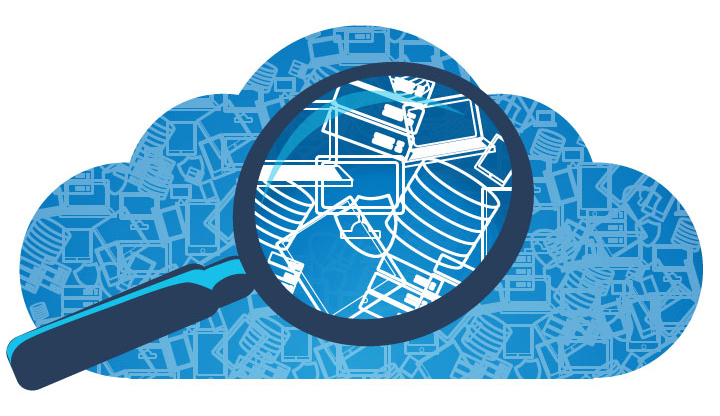
Maintaining the uptime of your key enterprise applications is vital for modern business, so you need to know what is happening in your data center at all times. Data center visibility is particularly important in remote data centers, where you may not have physical access to check on the racks. Remote datacenter management tools need to update in real time, making auto discovery the only real option for administrators.
The Challenge
A CMDB (Configuration Management Database) is the IT hub of an organization, representing a single source of truth for every possible feature of its IT system, in addition to all the relationships among every element of a dedicated database.
It needs reliable data and high speed to be of value, but if it is relying on feeds and data entry, errors can occur. This issue is exacerbated with remote data centers, where IT engineers may need to travel to gain access when problems arise.
The Solution
This is where auto discovery comes in. Your CMDB is only as good as the information that feeds it, so manual inputs are simply inadequate for enabling your data center teams to monitor environments in real time or close to it. However, tools such as auto discovery automatically identify changes within the data center on an ongoing basis, unlocking the full potential of the CMDB.
With Device42’s continuous auto-discovery, for example, the tool works in the background to collect data to feed the CMDB and produce an accurate picture of the IT infrastructure. New changes to the infrastructure are identified immediately.
How It Works
Device42’s auto-discovery tools make your CMDB a reliable single source of truth within your organization. Concerns about the reliability of your remote data-center management are allayed by delivering a clear view of your IT ecosystem, so that you can identify, manage, and verify all configuration items.
By finding devices on known networks and adding information about their configuration on an ongoing basis, these auto-discovery tools ensure the data in the CMDB is consistently accurate. Once the CMDB can be relied on as accurate, the process of discovery helps maintain the CMDB as a source for identifying devices or device changes that have been added without an appropriate change request, thereby ensuring security.
Here are some of the other benefits of auto-discovery tools from Device42:
- Device42’s auto-discovery process is agentless. There is no need to spend time and effort installing and managing agents on your various target machines to keep your inventory information up to date. You get a comprehensive overview of your network, its IP devices, applications and services (both running and non-running), and all of the interdependencies among them.
- Auto-discoveries can be scheduled so that your CMDB is always up to date.
- The process of auto discovery is not network load-intensive, so you can schedule multiple auto-discoveries on a daily or even hourly basis.
- You can determine the frequency of auto-discoveries, depending on the rate of change within the data center.
Auto Discovery Best Practices with D42
- Once you have decided to optimize your CMDB’s performance with auto-discovery from Device42, we recommend the following order of discoveries to minimize any subsequent reconciliation required:
- Network
- V-Server
- Windows/Linux/Hyper-V
- Cloud auto-discovery
- Blade
- Intelligent Platform Management Interface (IPMI)
- Device42 will verify whether a device is an existing one that needs to be updated or a new one that must be created using a serial number, universally unique identifier (UUID) and name, in that order. It will also check for aliases when seeking a name. For existing devices, the latest information found will be used.
- Device 42 builds a comprehensive device profile over a sequence of auto-discoveries by matching data including serial number, UUID, and device name as it conducts each stage of discovery. This creates a complete profile of the devices, their features, locations, software, and the physical/virtual interdependencies between them. This populates the detailed CMDB records, and it also provides the data for building Device42’s impact and dependency mapping functionality.
- When selecting a user account for auto-discovery, it is important not to use production account credentials because account lock-out could result in an outage.
Conclusion
Remote datacenter management offers many advantages, but it requires full visibility to be truly effective. That transparency can be delivered with a reliable CMDB supported by Device42’s next-generation auto-discovery tools.
Boost your organization’s efficiency, maximize productivity, and minimize costly downtime by securing full visibility of your IT infrastructure. Auto-discovery tools give a data center manager access to meaningful data on every component of the data center—well beyond power, capacity, and thermal. Whether it’s a virtual machine running low on disk space or a blade server chassis with a faulty fan, auto-discovery tools provide real-time, accurate information.
Are you interested in this kind of instantly accessible visibility? Get in touch to discuss how Device42 can make auto-discovery an invaluable tool for the management of your remote data center’s operations.



